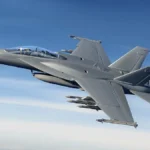WASHINGTON – During the Civil War, the Army relied on balloons, kites and pigeons to gather intelligence and scan the battlefield. These tools gave commanders critical insights to strategically position their forces and gain an advantage over the enemy.Today, the Army’s Aerial Intelligence, Surveillance and Reconnaissance (A-ISR) force continues that mission delivering timely, accurate and actionable intelligence to leaders at all levels. But instead of balloons and birds, it now operates aircraft. Still, most of the fleet’s more than 60 ISR aircraft date back to the Cold War era. The Army wants to address these limitations with the High Accuracy Search and Exploitation System, or HADES.
Building the Future with HADES
Deep-Sensing Capability
“HADES brings speed, range, endurance over long distances and altitudes to deep sensing,” said Lt. Col. Matt Palladino, ISR Task Force Aerial Chief. “It overcomes the physical limitations of older ISR aircraft, while maintaining the critical collection capabilities needed by armies and joint commanders around the world. With its payload capacity, it enables convergence on or off the aircraft, even in contested or degraded communications environments.”
Early Experiments with ARTEMIS
“ARTEMIS was our first attempt to put sensors on a jet and test them [in the Indo-Pacific Command area of operations],” Magee explained. “The results were robust and shaped the HADES record program.”
Early ATD tests found that the jet could stay in the air longer than turboprops, which had reached a maximum of five to six hours. The jets also deployed quickly, arriving at global locations in a day, and flew quickly, enabling sensor depth.
“ARTEMIS demonstrated both operational and financial value for the Army’s future ISR approach,” Palladino said. “It supported cross-combatant command operations and gave the new four-star theater commander access to a wider geography. With HADES, a single aircraft can fly thousands of miles from a forward location, eliminating the need for multiple bases.”
ARES Expands Mission
In 2022, the Army introduced a second ATD, the Airborne Reconnaissance and Electronic Warfare System (ARES), to the INDO-PACOM region. This larger platform was more closely aligned with HADES’ long-term objectives.
“ARES transformed the Army’s role in fighting the joint war,” Palladino noted. “It gave U.S. Army Pacific its own in-depth sensing capability with modern collection tools. Compared to ARTEMIS, ARES provided greater altitude and persistence, operating every day against high-level adversaries. Like ARTEMIS, Army Soldiers and industry partners are working together to support Army and joint commanders with this capability today.”
The Evolution of Airborne ISR
Airborne ISR is one of the earliest missions of the U.S. Army. During the Civil War, the Army relied on tools like kites, balloons, and birds to survey the battlefield and provide commanders with the intelligence they needed to act decisively.
Fast forward to 2025, and the mission remains the same, but technology has changed dramatically. The Army now has 60 ISR aircraft under the Enhanced Medium Altitude Reconnaissance and Surveillance System (EMARSS). Designed to meet the challenges of the Cold War and counterterrorism, EMARSS gave the Army a significant edge. However, the Army recognized the need for a next-generation fleet that could operate independently of allied bases, support multi-domain operations, and counter modern threats to secure communications.
Understanding the HADES Program
HADES Purpose
The High Accuracy Search and Exploitation System (HADES) will serve as a versatile, long-range sensing platform. It will enable the Army to detect and track threats while safely out of reach of enemy anti-access and area-denial defenses.
HADES and Acquisition Innovation
To accelerate HADES development, the Army turned to a different acquisition path known as Medium-Term Acquisition (MTA). This model delivers advanced systems within two to five years from the program’s inception.
Through MTA, the Army provides a stable response, ensuring that the system aligns with mission requirements and adapts quickly as needs change. The Army sees this strategy as essential for HADES because ISR technologies are advancing rapidly, and waiting half a decade or more would leave a significant capability gap.
Army resumes work on HADES aircraft program
“The Army informed SNC that all tasks associated with the assigned work activity — including procurement, submittals, contracting, administrative actions and on-site execution — are once again in motion under the subject agreement,” an Army spokesperson told Breaking Defense today.
If the Army’s HADES initiative moves forward on schedule, the service expects to land its first aircraft in late 2026 or early 2027. Overall, the plan could lead to the acquisition of more than a dozen jets, depending on annual purchases, funding levels and evolving threat assessments.
SNC Gains Lead Over Competitors
In August 2024, the Army tapped SNC to convert Bombardier’s Global 6500 business jets into an intelligence, surveillance and reconnaissance (ISR) platform for HADES. A rival group including L3Harris, Leidos and MAG Aerospace also pursued the contract as a replacement for the Army’s aging RC-12 Guardrail turboprops.
The GAO report shows how the Army evaluated bids from both teams. In terms of price, the L3Harris proposal came in at $133 million, a difference of $40 million compared to SNC’s $93 million. For technical quality, the Army gave L3Harris an “unacceptable” rating while SNC was awarded an “excellent” award. In the design and integration category, L3Harris again scored “unacceptable,” while SNC scored “excellent.” On certification, L3Harris remained “unacceptable,” while SNC gave it a “good” rating. Both teams received “good” ratings in the modular open systems approach and operations and maintenance planning.
The GAO noted: “The protester’s claims relate to SNC’s reorganization into Sierra Nevada Company, LLC in September 2023. After reviewing the record, we conclude that these claims do not justify sustaining the protest.”
L3Harris said last month that it would review options before deciding on next steps. SNC, on the other hand, praised the GAO’s ruling, saying it validated the strength and accuracy with which its team met the Army’s requirements for this important program.
Army awards contract to Sierra Nevada Corp.
Last August, the Army awarded Sierra Nevada Corp. (SNC) a contract worth just under $1 billion to convert Global 6500s to HADES configuration and provide related services and support. Work on the contract was postponed until January after L3Harris raised objections. L3Harris, which partnered with Leidos and MAG Aerospace, competed for the HADES program but was unsuccessful. In November 2024, Bombardier delivered the first Global 6500 for conversion.The designations reflect that other militarized Global 6500s already serve with the U.S. military, most notably the Air Force’s E-11A Battlefield Airborne Communications Node (BACN). Additionally, the Air Force’s first fleet of E-11As used older Bombardier BD-700 and Global 6000 business jets as their base platforms.








Leave a Reply